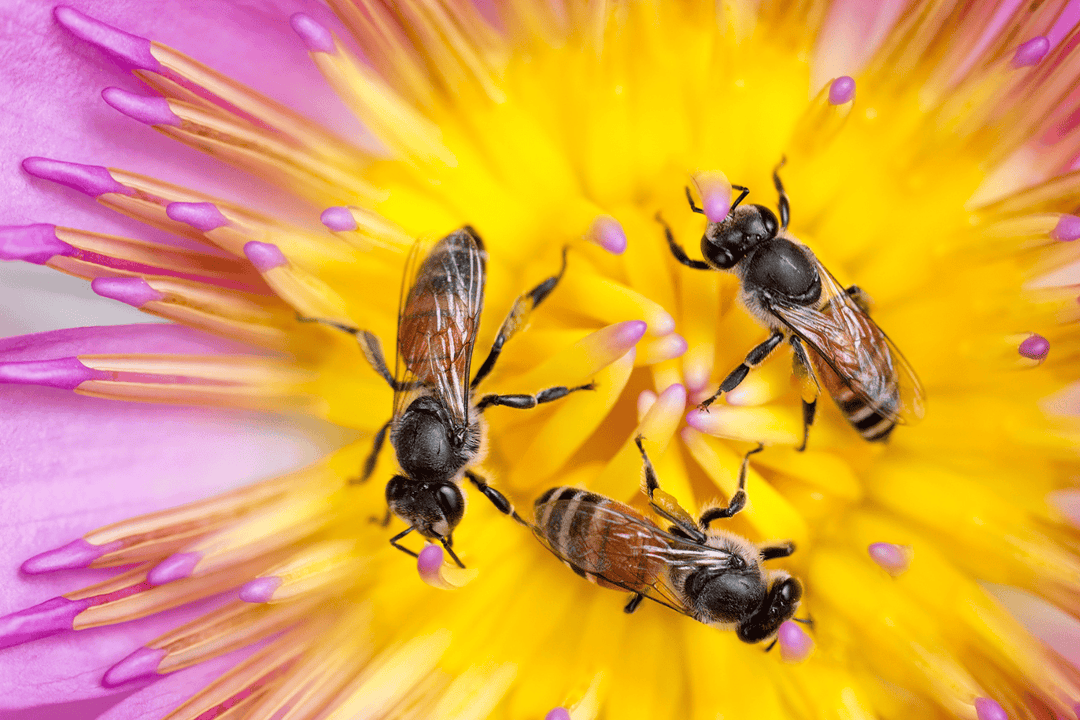The Truth About Recycling: What Gets Recycled and What Doesn’t

Recycling has long been hailed as one of the easiest ways to do your part for the planet. Toss your bottles in the blue bin, feel the eco-karma kick in, and move on with your day, right? But hold up, it’s not always that simple.
The truth is, the recycling system in the U.S. (and globally) is far more complex than many of us realize. Some items that look recyclable are rejected at facilities. Others get recycled, but only under very specific conditions. And some materials? They just never stood a chance.
This blog isn’t here to guilt-trip anyone. But if you’re the kind of person who genuinely wants to make a difference, and would like to understand what really happens after you “do the right thing”, let’s take a closer look at what gets recycled, what doesn’t, and how you can do better without needing a PhD in waste management.
The Basics: What Recycling Actually Means
Let’s start with something a lot of us assume but rarely unpack: what does it really mean to recycle something? Tossing your empty bottle or cereal box into the blue bin might feel like the responsible thing to do, and emotionally, it kind of is… but that act alone doesn’t guarantee the material will ever be reused.
True recycling is a multi-step industrial process. It involves collecting the material, transporting it to a facility, sorting it (which is harder than it sounds), cleaning it thoroughly, and then transforming it into raw material that manufacturers can use to make new products. That’s the ideal. But here’s where things get sticky.
Most of us grew up thinking of recycling as a simple, closed loop. Can gets used, can gets recycled, can becomes new can. But in practice, it’s rarely that clean. If a single greasy pizza box or unwashed peanut butter jar ends up in a batch of recyclables, it can contaminate the entire load. Once that happens, the whole batch might be rerouted to a landfill or incinerator. Yes, one sloppy mistake can send hundreds of otherwise recyclable items straight to the trash.
And that’s not even the full picture. Sometimes, even when everything is sorted and cleaned correctly, the materials still don’t get recycled, because no one wants to buy them. Recycling isn’t just about environmental ideals; it’s tied to economics. If there’s no market for that recycled plastic or paper, it doesn’t make financial sense for a facility to process it. And in recent years, global demand has dropped sharply. Countries like China, which used to buy huge amounts of U.S. recyclables, have significantly tightened restrictions on contaminated materials, making it harder for domestic programs to offload what they collect.

The end result? A lot of well-intentioned recycling efforts don’t go anywhere. According to the EPA and National Renewable Energy Laboratory, less than 10% of plastic waste in the United States was actually recycled in 2021 [1]. Let that sink in. Out of all the yogurt cups, shampoo bottles, and salad clamshells that made it to the blue bin, over 90% still ended up buried in a landfill or burned in an incinerator.
That number is more than just a data point. It’s a wake-up call. It tells us that the way we currently think about recycling (especially plastics) is deeply flawed. It doesn’t mean we should give up, but it does mean we need to get smarter about what we recycle, how we prepare it, and the systems we rely on to do the job.
What Definitely Gets Recycled (Most of the Time)
Some materials are consistently recyclable and have strong market demand, which means they’re more likely to actually get reused.
1. Aluminum Cans
Aluminum is the rock star of recycling. Cans can be recycled indefinitely without losing quality, and making a new can from recycled aluminum uses 95% less energy than making one from raw materials [2].
2. Steel Cans and Tin Cans
Soup cans, pet food cans, these are recyclable in most areas. Just rinse them first.
3. Cardboard and Paperboard (when clean)
Corrugated cardboard boxes? Recyclable. So are cereal boxes and paperboard containers, as long as they’re clean and dry. Greasy pizza boxes? That’s where it gets complicated (we’ll get to that).
4. Glass Bottles and Jars
Glass can also be recycled endlessly. But whether it is recycled depends heavily on your local facility. Some areas don’t accept it due to cost and contamination issues [3].
5. #1 and #2 Plastics (Sometimes)
Think: water bottles, milk jugs, shampoo bottles. These are the two types of plastic that still have some recycling value, but even then, it’s far from guaranteed. More on this in a minute.
What Might Get Recycled (Depending on Where You Live)
1. Paper Products
Office paper, newspapers, junk mail, often recyclable, but only if not wet, greasy, or shredded. Shredded paper clogs machinery, so always check local rules.
2. Plastic #5 (like yogurt containers)
Some programs accept it, some don’t. It’s technically recyclable, but demand is low. TerraCycle or store-based programs may be a better option.
3. Cartons (like for milk or juice)
These ‘Tetra Pak-style’ containers are made from layered materials (paper, plastic, aluminum). They’re accepted in many cities, but not all. Check before you toss.
What Doesn’t Get Recycled (Even If You Think It Does)
Here’s where things get a little depressing, but knowledge is power.
1. Plastic Bags and Films
These wreak havoc on recycling equipment. They tangle in machinery and shut down entire lines. Many grocery stores have drop-off bins, but they’re not accepted curbside [4].
2. Dirty or Greasy Paper (like pizza boxes)
Food residue contaminates paper recycling. The greasy parts of your pizza box? Trash them. The clean lid? That can go in the bin.
3. Black Plastic Containers
Black plastic is hard for sorting machines to “see.” Most facilities can’t process it, even if it has a recycling symbol.
4. Disposable Coffee Cups
They look like paper, but are lined with plastic. Most aren’t recyclable through standard curbside programs.
5. Clamshell Plastic Containers
Like the ones for berries or bakery items. Even if they’re labeled #1, they’re made from a different formulation than bottles and usually get rejected.
6. “Compostable” Plastics
PLA plastics (made from corn) need industrial composting, which most municipal facilities can’t provide. They don’t break down in landfills and aren’t recyclable.
The Recycling Numbers Game: What Do Those Numbers Mean?
You’ve seen the chasing arrows symbol with a number inside. It’s called a Resin Identification Code (RIC), and it was never meant to mean “recyclable.” It was meant for manufacturers, not consumers.
Here’s a quick breakdown:
- #1 PET – Common in drink bottles; recyclable in many places.
- #2 HDPE – Milk jugs, detergent bottles; more widely recyclable.
- #3 PVC – Pipes, packaging; not recyclable curbside.
- #4 LDPE – Plastic bags, some squeezable bottles; rarely accepted curbside.
- #5 PP – Yogurt cups, straws; conditionally recyclable.
- #6 PS – Styrofoam; rarely recyclable.
- #7 Other – Mystery plastics, mixed materials. Usually not recyclable.
Moral of the story: the number doesn’t guarantee anything. Always check local rules.
Why So Much Doesn’t Get Recycled
Even if a product could technically be recycled, that doesn’t mean it will be. A few reasons why:
1. Contamination
When recyclable items are covered in food, mixed with trash, or incorrectly sorted, they often get sent to the landfill. One dirty item can ruin a whole batch.
2. Economics
If it costs more to recycle something than to make it new, it usually won’t get recycled, even if it’s technically possible [5].
3. Lack of Infrastructure
Not all communities have the same access to facilities or sorting technologies. What works in San Francisco might be impossible in rural Iowa.
Common Recycling Myths (And What’s Actually True)
“It doesn’t matter if it’s dirty.”
False. Rinse your recyclables. Otherwise, you risk contaminating an entire batch of paper or plastic.
“Everything with a recycling symbol gets recycled.”
Nope. As mentioned, that little triangle is not a promise. It's just a category code.
“Biodegradable = recyclable.”
Nope again. Biodegradable materials aren’t usually recyclable and may actually disrupt the process.
“Styrofoam can be recycled somewhere.”
Technically, yes, but the facilities are few and far between. Most foam ends up in landfills or floating in waterways.
What You Can Do Instead
Okay, so you’re trying to help the planet and now you’re thinking, “Great, nothing works!” Don’t panic. The truth about recycling is more nuanced than bleak. Here’s what does help:
Reduce and Reuse First
Recycling should be the last resort, not the go-to. Choose reusable over disposable when possible. Borrow, share, repair.
Buy Less Plastic
Support companies that use glass, aluminum, paper, or recycled materials. Refuse items wrapped in plastic whenever possible.
Be a Bin Detective
Look up your local recycling rules. Every city is different. The app “iRecycle” or your municipal website are great starting points.
Support EPR (Extended Producer Responsibility)
EPR laws require manufacturers to handle the lifecycle of their products, including recycling. Several states are working on this.
Compost If You Can
Food waste doesn’t belong in landfills. Backyard or municipal composting can make a big difference.
How About Textile Recycling?
Old clothes are a huge contributor to landfill waste. The U.S. throws away 11.3 million tons of textiles every year [6]. While most can't be recycled traditionally, some brands and drop-off points accept fabric for repurposing.
Look for:
- Local textile recycling programs
- H&M’s garment collection boxes
- Brands that take back clothes for repair or reuse
Even better? Buy less, mend more. It’s budget friendly too!
Electronics and E-Waste: Don’t Trash It
Electronics contain valuable metals and toxic materials. Never throw them in the bin.
Instead:
- Use certified e-waste recyclers (look for R2 or e-Stewards certification)
- Check with your city for collection days
- Drop off at stores like Best Buy or Staples
Where the U.S. Stands in Global Recycling
Despite being one of the largest waste producers in the world, the U.S. recycles only about 32% of its waste, less than many European countries [7].
For comparison:
- Germany: 66%
- South Korea: 59%
- U.S.: 32%
So yeah, we’ve got room to grow.
Final Thoughts: Small Steps, Big Picture
Recycling isn’t perfect. Let’s just say it plainly. For years, we've been sold the idea that tossing our waste into the right bin would somehow solve our environmental woes. And while it’s a step in the right direction, it’s not the silver bullet we were promised. But here’s the thing, understanding the limits of recycling doesn’t make your efforts meaningless. It actually makes them more powerful. Because when you're aware of what works and what’s basically just greenwashing, you can move through the world with purpose instead of frustration.
And yes, it’s okay to feel a little disillusioned. Who hasn’t stood in front of a recycling bin holding a takeout container and wondering, “Wait… does this even count?” That confusion is part of the problem, but it’s also where the opportunity lies.

When you take the time to learn about your local recycling program, rinse your containers properly, avoid plastic that’s rarely recycled, or even just bring your own bags to the store, you’re modeling conscious behavior. That ripples outward. Your kids see it. Your friends notice. Your co-workers ask questions. And suddenly, what started as one person trying a little harder becomes a small culture shift. Multiply that across neighborhoods, workplaces, and communities, and it is meaningful change.
But don’t stop at your bin. Your choices as a consumer carry weight, what you buy, how you buy it, and from whom. Supporting brands that use post-consumer recycled packaging, pressuring companies to reduce unnecessary plastic, choosing reuse over single-use, those decisions add up. Even better? Get involved. Ask your city about expanding what they recycle. Push for composting programs. Vote for officials who take environmental policy seriously. Your influence doesn’t stop at your front door.
And let’s talk about perfection for a second, because the zero-waste movement, while inspiring, can sometimes feel a little all-or-nothing. And that pressure? It’s paralyzing. Nobody is doing this perfectly. Not the person with the mason jar of trash. Not the climate activist. Not even the companies making the compostable packaging. So take the pressure off. You don’t have to overhaul your entire life in one weekend. You just have to start where you are, with what you can do right now.
Because that’s how real change happens. Not in massive, cinematic gestures, but in small, thoughtful decisions made over and over again. So recycle what’s actually recyclable. Reduce when you can. Reuse creatively. And remember: it’s not about being flawless. It’s about being informed, intentional, and a little more aware today than you were yesterday.
Progress, not perfection. That’s what moves the needle. And honestly? That’s how we build a future that feels just a little more hopeful, one choice at a time.

Jana Taylor is an Iowa native and seasoned copy writer, content creator and designer, specializing in marketing and graphic design since 2015. In her spare time, she volunteers in her community, loves to garden and is an avid travel enthusiast.
References
[1] www.epa.gov/facts-and-figures-about-materials-waste-and-recycling/plastics-material-specific-data
[2] www.aluminum.org/Recycling
[3] https://truthout.org/articles/where-does-your-recycled-glass-really-go/
[4] www.plasticfilmrecycling.org
[5] https://recyclingpartnership.org/wp-content/uploads/dlm_uploads/2024/05/SORR_Methodology-1-1.pdf
[6] www.epa.gov/facts-and-figures-about-materials-waste-and-recycling/textiles-material-specific-data
[7] www.oecd.org/environment/waste/global-plastics-outlook-policy-scenarios.htm






